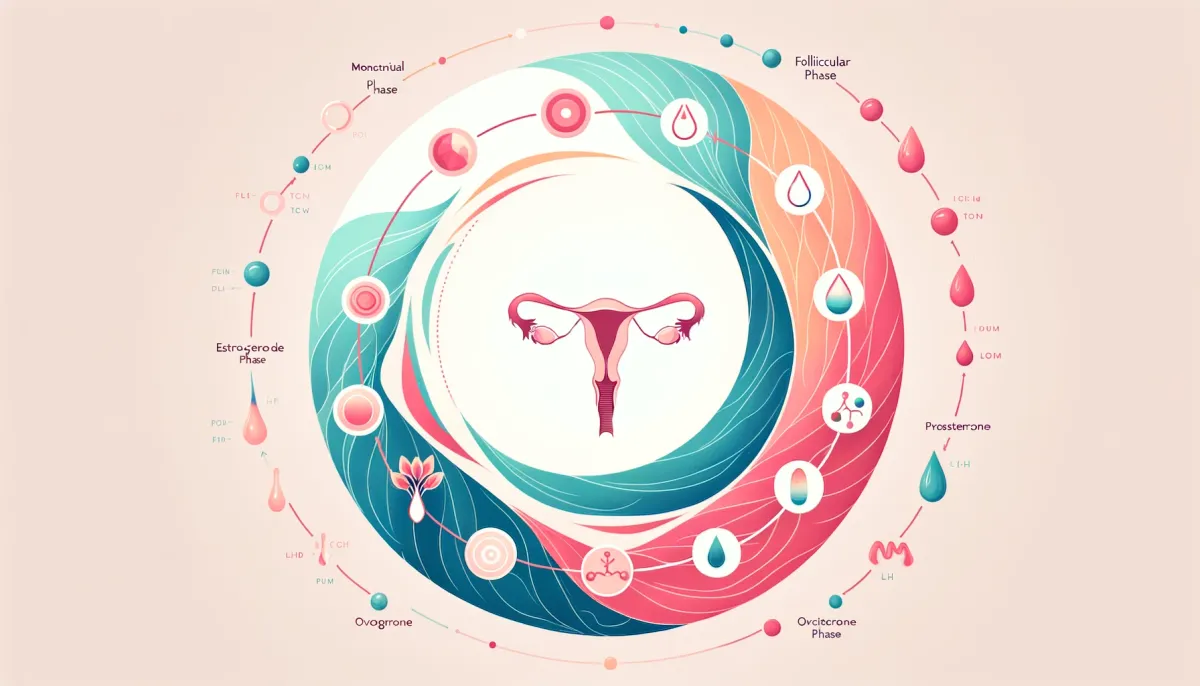Remarkable Power of Breath-work: Inhale, Exhale, Transform

Two years ago, amidst a whirlwind of challenges that tested my limits, I stumbled upon a practice that felt like a beacon of light in the darkness: breathwork. This ancient practice, revered by countless cultures across the globe, became my solace, offering me the mental strength and clarity I desperately sought. For 30 transformative days, breath work was my anchor. Then, life's unpredictable rhythm took over, and slowly, my commitment waned.
Fast forward to two months ago, I found myself at a crossroads with my mindfulness practice, feeling as though I'd hit a plateau. In search of a breakthrough, a memory resurfaced—a breathing technique that once brought me unparalleled clarity. This recollection spurred me back into the world of breathwork, this time embracing the box breath method for seven minutes daily. The impact? Profound. The clarity and focus I've experienced have been nothing short of life-changing.
As I embark on this renewed journey, weaving breath-work into the fabric of my daily routine, I am compelled to share the magic of this practice with you. From its ancient roots to its modern-day application, breath-work is a testament to the timeless wisdom embedded in our very breath. Join me as we explore this powerful tool for transformation, a practice that not only promises to enhance mindfulness but to open doorways to uncharted territories of our inner landscape.
What is breath-work?

Breath-work is a transformative practice that involves intentional manipulation of one's breathing pattern to influence mental, emotional, and physical states. Rooted in various ancient traditions and cultures worldwide, breathwork encompasses a wide range of techniques designed to promote healing, self-awareness, and spiritual growth. By consciously altering the depth, pace, and rhythm of breath, practitioners can access altered states of consciousness, release emotional blockages, and achieve a profound sense of relaxation and clarity. The practice serves as a bridge between the conscious and subconscious mind, allowing individuals to tap into deep reservoirs of inner strength and resilience. Whether seeking stress relief, emotional release, or spiritual insight, breathwork offers a powerful, accessible tool for enhancing overall well-being and navigating the complexities of the human experience.
Breath is Spirit

In the most ancient and sacred traditions across the globe, breath is revered not merely as a physiological necessity but as the very essence of life itself—spirit. This profound concept transcends the mere act of breathing, elevating it to a symbolic exchange between the individual and the cosmos. The word "spirit" itself is etymologically tied to "breath," derived from the Latin "spiritus" and the Sanskrit "prana," both of which encompass the breath as a life force, a divine wind that animates the soul.
This intrinsic belief positions breath as the bridge between the physical and the spiritual, a conduit through which we can access deeper realms of consciousness and connect with the universal energy that binds all existence. Embracing breath as spirit invites a sacredness into our daily lives, transforming each inhale and exhale into a meditative practice, a moment of communion with the greater whole. It reminds us that to breathe is to be alive, to participate in the eternal cycle of giving and receiving, to be intimately connected to the world around us and the infinite beyond.
Uncovering the Origins of Breath-work

The practice of breath-work, or conscious control of breathing, is rooted in ancient wisdom and has been a cornerstone of spiritual, therapeutic, and healing traditions across the world for thousands of years. Its historic use and context vary among cultures, each bringing its unique perspective and techniques to harness the power of breath.
Hinduism and Pranayama
One of the earliest and most influential traditions of breathwork comes from ancient India, where it was developed as part of yoga practice. Pranayama, which literally means "extension of the prāṇa (breath or life force)," is detailed in texts like the Bhagavad Gita and Yoga Sutras of Patanjali. These practices were designed to prepare the body and mind for meditation, promoting spiritual growth and physical health.
Buddhism and Anapanasati
Buddhist practice includes Anapanasati, or mindfulness of breathing, which is said to have been taught by the Buddha himself as a means to enlightenment and nirvana. This form of breath meditation focuses on the sensation of breath as it enters and exits the body, cultivating concentration and mindfulness.
Taoism and Qi Gong
In China, Taoist practices such as Qi Gong (Chi Kung) emphasize the cultivation and balance of Qi (life energy) through breath control, movement, and meditation. These practices aim to harmonize the body with the Tao, or the fundamental nature of the universe, promoting longevity and spiritual insight.
Greek Philosophy
The ancient Greeks also recognized the importance of breath, associating it with the pneuma, or the vital spirit. Philosophers like Aristotle explored the concept of pneuma as the force that animates the body and connects the physical to the spiritual.
Indigenous and Shamanic Practices
Many indigenous cultures around the world have their own forms of breathwork, often integrated into shamanic practices for healing, vision quests, and spiritual communication. These traditions highlight the breath as a bridge between the physical and spiritual worlds.
Sufism and the Whirling Dervishes
In Sufism, the mystical branch of Islam, practices involving breath control are used to achieve states of ecstasy and closeness to the divine. The Whirling Dervishes, for example, combine specific breathing patterns with their spinning dance to reach a state of spiritual transcendence.
Throughout history, breath-work has been a universal tool for enhancing well-being, accessing deeper states of consciousness, and connecting with the divine. Despite the diversity of practices and philosophical backgrounds, the underlying premise remains consistent: the breath is a powerful mediator between the body, mind, and spirit, offering a path to balance, health, and enlightenment.


Types of breath-work practises

Pranayama (Yogic Breathing)
Originating from ancient yoga traditions, Pranayama involves a series of breathing exercises designed to control the breath to enhance physical and mental vitality. Techniques vary from the calming Anulom Vilom (alternate nostril breathing) to the energizing Kapalabhati (skull shining breath), each with specific benefits for balancing the body's energy channels.
Holotropic Breathwork
Developed in the 1970s by psychiatrists Stanislav and Christina Grof, Holotropic Breathwork is an intense practice that uses rapid breathing to induce altered states of consciousness. It aims to facilitate emotional healing and personal growth, often leading to profound insights and transformations.
Wim Hof Method
Named after its creator, the Wim Hof Method combines specific breathing techniques, cold exposure, and meditation to strengthen the immune system, improve resilience, and increase energy levels. The breathing aspect involves repeated cycles of deep breaths followed by breath retention, helping to alkalize the body and reduce stress.
Buteyko Breathing
Developed by Ukrainian physician Konstantin Buteyko, this method focuses on reducing breathing volume to normalize the levels of carbon dioxide in the blood. It’s particularly beneficial for people with respiratory conditions, such as asthma, by teaching them to breathe more gently and less frequently.
Transformational Breathwork
This technique emphasizes using full, deep breaths to improve oxygenation throughout the body, release tension, and open up blocked emotional energy. Practitioners often experience increased well-being, reduced anxiety, and a deeper connection with their inner selves.
Box Breathing
Also known as square breathing, this simple yet effective technique involves inhaling, holding the breath, exhaling, and holding again, each for an equal count. It's used by athletes, military personnel, and others to reduce stress, improve concentration, and prepare for challenging situations.
Each of these breathwork practices offers unique pathways to health, well-being, and self-discovery, inviting practitioners to explore the profound impact of their breath on their overall life experience.
Breath-work and the Nervous system

Breath-work exerts a significant influence on the nervous system, primarily impacting the autonomic nervous system (ANS), which regulates involuntary bodily functions, including heart rate, digestion, and respiratory rate. The ANS is composed of two main branches: the sympathetic nervous system (SNS), responsible for the body's "fight or flight" response, and the parasympathetic nervous system (PNS), which controls the "rest and digest" functions.
When you engage in breath-work, you can directly influence the balance between these two systems. For example, slow, deep breathing techniques activate the PNS, leading to a reduction in heart rate and blood pressure, promoting a state of calm and relaxation. This activation helps counteract the stress-induced activation of the SNS, reducing stress and anxiety levels and fostering a sense of well-being.
Conversely, some breath-work practices involve rapid, forceful breathing that temporarily stimulates the SNS, creating a heightened state of alertness and energy. This can be beneficial for waking up the body and mind, improving focus, and preparing for physical activity.
Moreover, breathwork can influence the brain's chemistry and neural pathways. By altering breathing patterns, you can affect the balance of oxygen and carbon dioxide in the blood, which can, in turn, influence the pH level of the blood. These physiological changes can impact the brain's limbic system, involved in emotional regulation, further enhancing mood and reducing stress.
In summary, breathwork offers a powerful tool to consciously regulate the nervous system, providing a pathway to manage stress, enhance relaxation, and improve overall mental and emotional well-being. By mastering control over your breath, you gain control over your response to stress and your capacity for calm, contributing to a healthier, more balanced nervous system.

Breath-work and heart-rate connection

Breath-work exerts a profound influence on our physiological and psychological states, acting as a powerful tool for regulating our internal rhythms and enhancing our overall well-being. At the core of its impact is the intimate relationship between our breathing patterns and our heart rate, a phenomenon known as respiratory sinus arrhythmia. This interaction allows breath-work to modulate our heart rate variability (HRV), which is the variation in time intervals between heartbeats. By consciously altering our breathing rhythm—slowing it down or adopting specific patterns—we can directly influence our HRV, promoting a state of coherence where our heart, mind, and emotions operate in harmonious synchrony.
This state of coherence not only fosters emotional stability and cognitive clarity but also amplifies the body's bio-magnetic field. Research suggests that the heart generates the largest electromagnetic field in the body, measurable several feet away. Through breathwork, as we enter a coherent state, this magnetic field becomes more organized and harmonious, potentially influencing not only our own cells and systems but also those around us. This cascade of effects underscores the transformative potential of breathwork, offering a gateway to enhanced health, deeper emotional resilience, and an expanded sense of connection with the world.
How to get started with breath-work?

Beginning your breath-work journey can significantly enhance your mental, physical, and emotional well-being. Here’s a comprehensive guide to resources that can help you get started:
The Open App
- Description: The Open app offers a wide range of guided breathwork sessions by a physical studio in LA,US suited for different goals, such as reducing stress, improving concentration, or boosting energy.
- Why It’s Recommended: It's user-friendly and caters to both beginners and advanced practitioners, making it a versatile tool for exploring breathwork. I simply love this app.
YouTube Channels
- TAKE A DEEP BREATH
- Description: This channel provides a variety of breathwork tutorials and guided practices focused on relaxation, energy boosting, and emotional release as well as lots of useful information about healthier lifestyle.
- Why It’s Recommended: It’s free and accessible, offering high-quality content for those exploring breathwork at their own pace.
- Wim Hof
- Description: Known as “The Iceman,” Wim Hof shares techniques combining breathwork with cold exposure for improved health and resilience.
- Why It’s Recommended: Hof’s unique method is backed by scientific research and personal testimonies, appealing to those looking for a challenge.
Books
- “Breath: The New Science of a Lost Art” by James Nestor
- Description: This book explores the history and science of breathing, offering insights into how breathwork can transform health.
- Why It’s Recommended: It’s a compelling read that combines scientific evidence with practical advice, suitable for anyone looking to deepen their understanding of breathwork.
Online Courses
- Insight Timer
- Description: An app offering free and premium guided meditations and breathwork sessions from experienced practitioners.
- Why It’s Recommended: With a vast library of sessions, it’s a great resource for exploring different styles and finding what works best for you.
Workshops and Retreats
- Local Yoga Studios and Wellness Centers
- Description: Many yoga studios and wellness centers offer breathwork classes, workshops, or retreats.
- Why It’s Recommended: Participating in a live session provides hands-on guidance and the opportunity to connect with a community of like-minded individuals.
By utilizing these resources, you can embark on a breathwork journey that not only enhances your well-being but also connects you with a community of practitioners. Whether through apps like Open, YouTube channels, insightful books, online courses, or in-person workshops, the world of breathwork is rich with opportunities for growth and exploration.
Conclusion
In wrapping up, my personal exploration into the realm of breathwork, with a special focus on box breathing, has profoundly shifted my perspective on mental and emotional well-being. What began as a tool for navigating difficult times has evolved into a cornerstone of my daily routine, offering unparalleled clarity and a deeper connection to the ancient rhythms of life. This journey has not only highlighted the transformative power of breath-work on our nervous system but also its role in harmonizing with the universe's natural cycles. The simplicity of box breathing belies its profound impact, serving as a reminder of the accessible yet powerful means we have to enhance our health and well-being. By integrating this practice into our lives, we embrace a path of self-discovery and holistic health, underscoring the importance of listening to our bodies and aligning with the cosmos. Let this exploration inspire us to value the breath as a fundamental key to unlocking our fullest potential, fostering a world where well-being is rooted in the wisdom of our own breath.
FAQs for Breathwork
1. What is breathwork?
Breathwork involves consciously controlling your breathing patterns to improve mental, physical, and spiritual well-being. It's a practice used to induce relaxation, enhance focus, and facilitate emotional release.
2. How often should I practice breathwork?
Starting with a few minutes each day can be beneficial. As you become more comfortable, you might extend your practice or experiment with different techniques to suit your needs and schedule.
3. Can anyone practice breathwork?
Most people can safely practice basic breathwork. However, those with certain health conditions, such as cardiovascular issues or respiratory problems, should consult a healthcare provider beforehand.
4. Do I need a teacher to practice breathwork?
While basic techniques can be self-taught, for more advanced practices, guidance from a qualified instructor is recommended to ensure safety and maximize benefits.
5. Are there different types of breathwork?
Yes, numerous types exist, including Pranayama in yoga, the Wim Hof Method, and Holotropic Breathwork, each offering unique techniques and benefits tailored to various goals and preferences.


